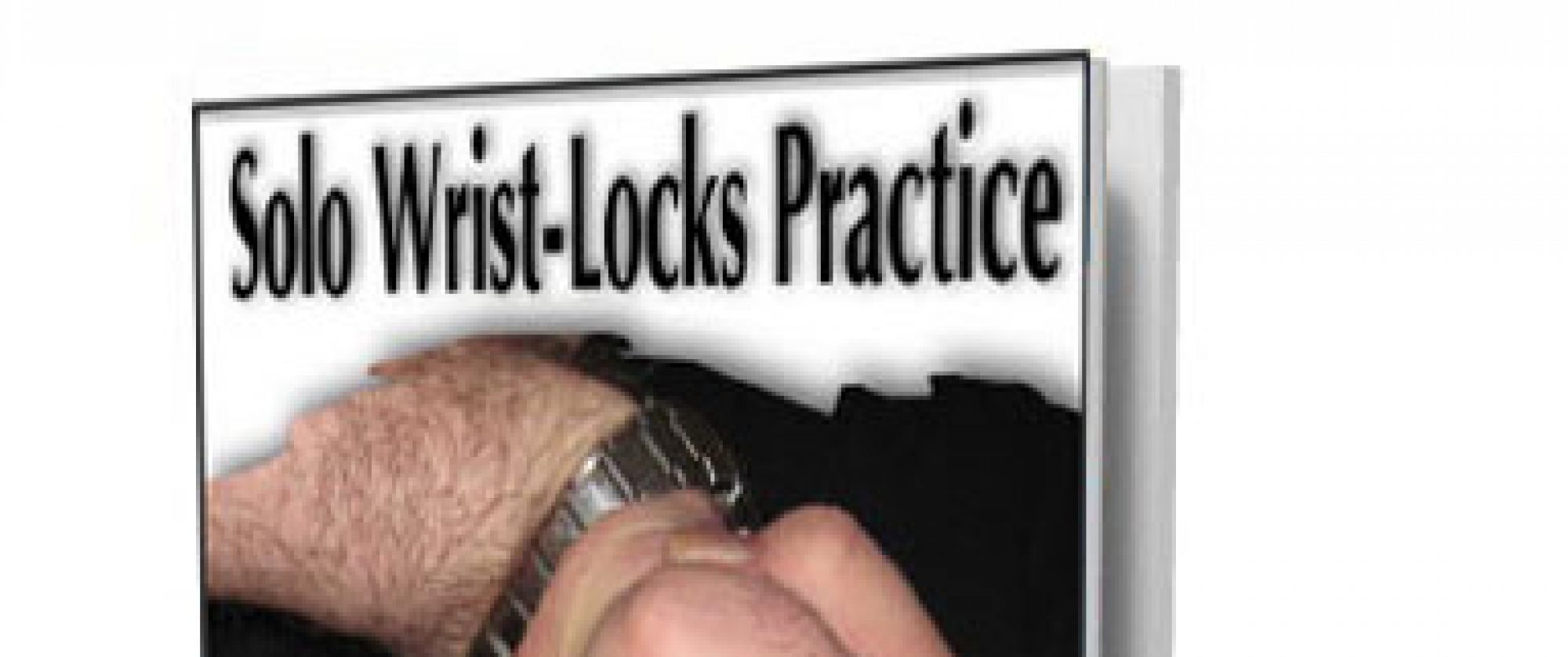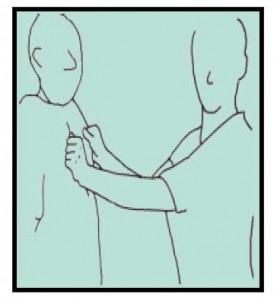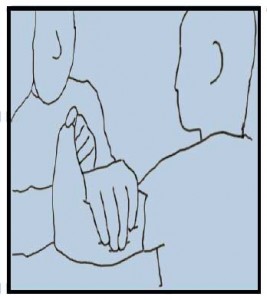by Keith Pascal
Even though we are about to discuss pressure points, this is really a discussion about nerve strikes. And even though this is a discussion about causing pain as you wallop the nerve, we’re still really in the middle of a discussion about wrist locks. Yes, wrist locks …
Are you ready to learn about a few spots that can be real fight enders … even though that’s NOT how I use them?
[headline_georgia_small_left color=”#000000″]1. Separating Two Sides of the Nerve Strike “Practice Coin”[/headline_georgia_small_left]
Anyone who has been a subscriber for any length of time knows that I always look at the “flip side” of any situation. And those very same subscribers have heard me explain this before.
Well, today, I’d like to present a different idea. Call it an experiment for you to try:
Instead of practicing both the wrist-locker’s punch response and the response by the person wanting to escape, one drill right after the other, try this change.
Today, whether your are the locker or the lockee, only have the person locking shooting for these lesser-known targets. Tomorrow, switch, and the person trying to escape the lock attempt will do the punching.
If you’re a little confused, now, don’t worry. As you contrast the difference between the two days, you’ll immediately see what I’m talking about.
I think the separation of drills into two days will do your skills good. In this instance, you’ll be able to use the strikes both in an attack and as a defense more effectively. It’s just a theory that I have … and that I want you to test.
Remember, lock-hit, today. Escape-hit, tomorrow.
[headline_georgia_small_left color=”#000000″]2. Ouch, That Hurt![/headline_georgia_small_left]
If I just say “glands,” half of you would click away.
I want you to think about this for a minute … think about your glandular areas on your body, behind the jaw, below the ear. Ouch.
How about in the armpit? Or just as bad, in front of the arm pit, toward the pectorals?
Do you know about the glands on the inner thigh?
What we are really talking about are your “Lymph Nodes.”
Got it?
These are important, but often overlooked, targets for martial artists.
Today, we’re going to use them a bit differently. Okay?
Think lymph nodes.
[headline_georgia_small_left color=”#000000″]3. Today’s Exercise Sequence[/headline_georgia_small_left]
Get a practice partner. One of you will be wrist locking, the other receiving. Are you ready? Here are the steps to practice:
a) Put a loose wrist lock on your partner; any lock will do. Don’t effect pain, yet.
b) While the one hand holds the loose lock, your other hand (fist) experiments to see which lymph nodes you can reach with a quick strike. Choose the best targets for this lock position.
c) While still holding the loose wrist lock, practice efficiently punching “to the node.” Careful; don’t actually hurt your partner. Those are tender spots. Do this for at least ten minutes.
d) Now, you’ll tighten your lock, for this exercise: You snap on a lock. As your partner feels pain, he or she resists. The instant you feel the resistance, you prevent the escape with a jab to the closest lymph node … the spot you practiced hitting so much, it now feels automatic to stop the escape attempt.
e) As a last step, set up a few realistic situations, where your response would be to go into this very lock. The minute you feel any resistance … “if” you feel the escape attempt … you respond without thinking. You “nudge” them back into compliance.
And that’s enough for today.
Tomorrow …
[headline_georgia_small_left color=”#000000″]4. Tomorrow’s “Flip-Side” Sequence[/headline_georgia_small_left]
Obviously, you don’t have to limit the above practice to one wrist lock. You could do this every week for an entire summer, for example. Each week, choose a couple of different locks or controls. Vary which lymph nodes you punch.
Now, after you have given the above exercise a break of at least a day, you’ll try the flip side of the coin/exercise.
This time, the person being locked will use those lymph nodes to effect an escape … and turn around the situation:
a) Grab your partner in a loose lock, just like yesterday. No pain … yet.
b) This time, your partner will explore all of the reachable lymph nodes on your body. Which can ‘she’ (I’ll practice this with my wife) reach with a speed hit? Which spots have no impediments? Direct shots only. (Yesterday, you did the hitting; today, your partner hits, to escape.)
c) Have your partner practice those hits over and over, until boredom really sets in. You want those hits as automatic as possible. No pauses in between the start of the lock and the escape response hit.
d) Now, you tighten the wrist lock, simulating a real situation … and your partner escapes with a hit (careful in practice) to your lymph node. Do this repeatedly.
e) Have your partner practice variations on follow-ups after the lymph-hit. The person shunning the wrist lock needs to escape and then either run … or get control of the situation. Practice for this.
f) Be sure to practice both parts. You need a chance to try to escape, too.
Any questions comments additions, deletions, and or completions?
Keith
PS Right now, “Wrist Locks” (revised) is only available as a soft cover. Would you prefer that it stay that way, or should it be published on Kindle? Would you prefer Nook?
Opinion?
 <= As part of earning a black belt, Austin LaPointe has had to write a martial-arts article.
<= As part of earning a black belt, Austin LaPointe has had to write a martial-arts article.





